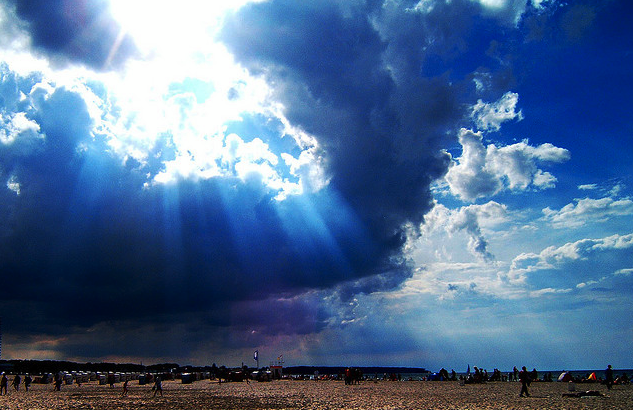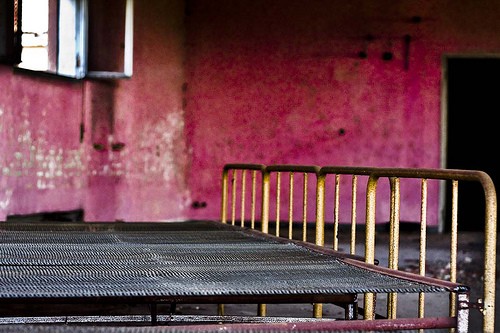Five Steps to Burst a Property Bubble The Barefoot Investor
Post on: 2 Апрель, 2015 No Comment

This week I gave an hour-long speech to 500 real estate agents, armed with nothing more than a lot of hot air and a blue balloon.
Im sure there were more than a few in the crowd who were hoping that part of my presentation involved twisting the balloon into the shape of a cute-looking dog.
Yet the only dog I discussed that day was a financial one (and it has fleas and a bloated belly caused by over-eating).
I have a stock standard speech for when a speaking engagement comes my way entitled the Barefoot Investors Five Steps to Financial Freedom. which coincidentally is the same title as my book (this is known in the industry as “leveraging your content”).
Still, as my audience was a group of real estate agents I thought I would spice things up a little, by altering the ‘five steps to financial freedom speech to ‘how to create a property bubble in five simple steps.
Theres no shortage of people with vested interests giving their views on the property market banks, builders and real estate agents tend to move in concert to sing the song of strong, steady and safe returns from property. Which makes sense, given their very livelihood depends on it.
Yet the focus of my speech to this group of realtors was reality booms almost always end in busts (not soft landings).
Sell, sell, sell
So taking a lung full of air and blowing into the balloon I introduced the first step to creating a property bubble: start selling money aggressively, which was helped along in this country and elsewhere by the deregulation of the finance industry in the 1980s.
A big asset boom needs lots of leverage, and thats exactly what the multitude of lenders and the now 20,000 (unregulated) mortgage brokers deliver.
Stop saving
Blowing into the balloon again, I introduced the second step in creating a housing bubble: stop saving.
Well, we actually went one better than that and not only stopped saving but started spending more than we earned.
Look ahead
The balloon was starting to get bigger as I introduced the third step to creating a property bubble: make people fund their own retirement.
In the 1980s the Federal Government introduced compulsory superannuation, which is where the property boom really got its legs suddenly people realised they could be retiring without a safety net.
Boomers realised it wouldnt be long before they could spend their days on the golf course, although many were worrying they wouldnt be able to afford the green fees.
The National Centre for Social and Economic modelling, along with a host of other pundits, has predicted that baby boomers have not saved enough for retirement.
Start fresh
The fourth step is a natural fit: break with tradition.
The average buttoned-down baby boomer may look tame sipping a soy latte, but 30 years ago they were the original rebels indulging in free love, good music and bad fashion.
So its not surprising that this generation would do things their way. Theyd long been encouraged by their much more conservative parents to pay off their mortgage as quickly as possible, the idea being that getting the mortgage monkey off their back was tantamount to being financially free.
But for many boomers, with only a few short years until retirement, and without enough money in the bank, it was time to break this tradition.
Fortunately the deregulated banking industry came along just at the right time allowing boomers to unlock their equity, a godsend to those wanting to beef up their meagre retirement stash, and also those wanting a new plasma television.
In 2004, at the peak of the property boom, one-third of all new home loans were for investment purposes.
Low interest
The final step in creating a property boom was to lower interest rates, making debt cheaper to attain.
This, coupled with lower standards for attaining credit (anyone with two feet and a heartbeat), and rampant speculation, saw housing prices double between 1997 and 2003.
With a now bulging balloon in my hand I discussed the idea of a soft landing that so many property people preach.
I pointed out that there are some significant observers who suggest otherwise.

The respected The Economist magazine has labelled this worldwide property boom “the biggest asset bubble in history” bigger than the tech boom, bigger than the roaring 1920s stock market boom that preceeded the (not so) Great Depression.
Last year the OECD found that Australia has “by far the most overvalued houses in the Western world, with prices 52 per cent higher than justified by rental values”.
But perhaps this time it really is different. Maybe the fundamental rule of markets the bigger the boom, the bigger the eventual bust is as old hat today as savings.
I explained that although I dont have a crystal ball and cannot predict the future price of anything, a good case study to learn from is Japan.
In the 1980s there was a belief that property prices would keep rising indefinitely and why shouldnt they? After all, not only are they an economic powerhouse, but land is scarce for a nation with 127 million or so residents.
Towards the top of the boom, buoyed by low interest rates, financiers introduced the concept of inter-generational loans, and eased credit standards as a way of helping people attain the booming prices.
Between 1989 and 1990 the Bank of Japan became worried that the property boom was becoming a bubble and took preventative steps by tightening interest rates.
The bubble popped at which point I let go of my balloon to maximise theatrical effect.
The resulting bust saw housing prices fall for 14 years in a row, and prices retreated as far as 60 per cent in Japans capital cities.
More worryingly, the stock market crashed 80 per cent, as consumers slowed their spending and the economy plunged into recession.
I explained to my audience that regardless of what happens with the price of property, the underlying drivers of the boom will need to be dealt with by the broader economy at some stage.
With the level of private debt around 145 per cent of income (in the 1950s it was 20 per cent), and little or no savings buffer, it doesnt take too many interest rate rises before people start to hit the wall.
Think about that if youre one of the millions of Aussie consumers who will together spend $17 billion on the never-never in the name of Santa this month.
And while you are thinking, consider your own mortgage I show you how to pay it off faster here.
Tread your own path!
Photo: www.flickr.com/photos/skazama/76793999/














